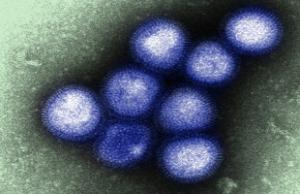The World Health Organization (WHO) today confirmed four recent novel H7N9 avian flu cases, as scientists revealed their latest risk assessments based on genetic monitoring and lab tests.
In a statement, the WHO said it has received reports of two infections from China’s Zhejiang province, which include cases involving a 57-year-old man and a 30-year-old man who is his son-in-law. Some machine translations of a Chinese-language media report had suggested the two were father and son.
Health officials address new cases
A report today from Xinhua, China’s state news agency, had more details about the connection between the two men. Li Lanjuan, MD, director of the Infectious Diseases Lab in Zhejiang province, told the news service that the man and his son-in-law were not living together before the older of the two got sick, but the younger one cared for his sick father-in-law.
Lanjuan said it’s not clear if the older man transmitted the virus to his son-in-law.
The WHO said it also received reports of two H7N9 cases recently detected in Hong Kong, both of whom had traveled from the nearby mainland city of Shenzhen. The patients are a 36-year-old woman who was hospitalized in Hong Kong on Nov 27 after visiting Shenzhen, where she had slaughtered a chicken for cooking and eating.
Hong Kong’s other patient is an 80-year-old man from Shenzhen who traveled with family members to Hong Kong on Dec 3 for treatment of an underlying medical condition. He came down with a fever while in the hospital but is in stable condition.
So far all close contacts of the two patients have tested negative for the H7N9 virus, and there are no epidemiologic links between the two cases, according to the WHO. So far there is no evidence of sustained human-to-human transmission of H7N9, the agency said.
The four new cases bring the unofficial global number of H7N9 cases to 143, which includes 45 deaths. All but three of the cases were detected in China, but those three infections have travel links to China.
Lab studies assess changes, resistant strain behavior
Meanwhile, the task of assessing the risk of the new virus continues in national laboratories and research institutions.
A spokesman for China’s National Health and Family Planning Commission (NHFPC) told reporters at a press conference today that no H7N9 mutations have been detected, and transmission from animals appears to be the only way humans are becoming infected with the virus, according to a separate report from Xinhua.
In another lab development, researchers based at Icahn School of Medicine at Mount Sinai in New York City today reported findings from experiments that suggest oseltamivir-resistant strains of H7N9 transmit and cause disease just as effectively as strains that aren’t resistant to the drug. The team published its findings in the latest online edition of Nature Communications.
Analysis of a strain from one of Shanghai’s first H7N9 patients revealed the resistance marker in one of the strains, and resistant H7N9 strains have also been linked to clinical treatment failures in some of China’s severely ill patients. The reports raised concerns, because so far there is no vaccine against the novel strain, which leaves antiviral medications as a key treatment and prevention measure.
 In the Nature Communications study, researchers used human tracheobronchial endothelial cells and a mouse model to test if the resistance mutation affects replication and pathogenicity. They also tested how well resistant and sensitive H7N9 strains replicated in mice treated with oseltamivir (Tamiflu) and zanamivir (Relenza). Their experiments also tested the ability of the strains to transmit by respiratory droplets in guinea pigs.
In the Nature Communications study, researchers used human tracheobronchial endothelial cells and a mouse model to test if the resistance mutation affects replication and pathogenicity. They also tested how well resistant and sensitive H7N9 strains replicated in mice treated with oseltamivir (Tamiflu) and zanamivir (Relenza). Their experiments also tested the ability of the strains to transmit by respiratory droplets in guinea pigs.
The investigators found that the resistance mutation, when compared with antiviral-sensitive H7N9, didn’t hamper the ability to replicate in human respiratory tract cells or cause disease or deaths in mice. Tests in guinea pigs found that airborne H7N9 transmission was inefficient, but that acquiring oseltamivir resistance didn’t further lower transmissiblity.
The group noted that the findings run counter to earlier findings for oseltamivir-resistant seasonal H3N2. They wrote that this observation underscores the sometimes unpredictable nature of fitness in influenza A viruses.



